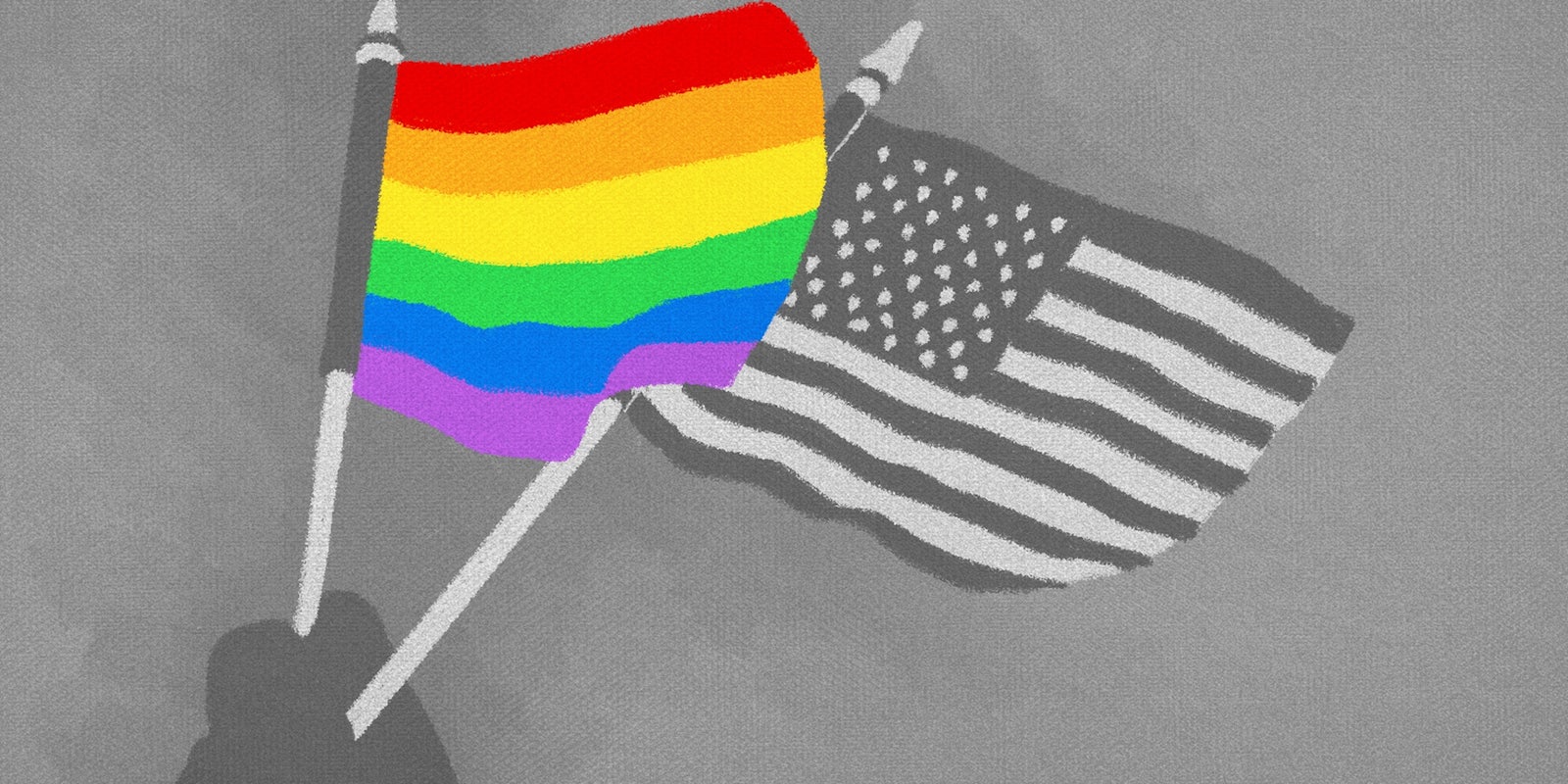After decades of activism, gay-rights advocates began lining up early Friday morning on the steps of the Supreme Court, fighting for a chance to see history made in person.
Just after 10am ET, the Supreme Court handed down a 5-4 decision, ruling that state bans on same-sex marriage are unconstitutional. Caleb Graves was ready.
“I showed up at 5:40am, and there were already about 80 people in front of us on line,” Graves, a Georgetown Law student, told the Daily Dot. (Disclosure: Graves is in a relationship with Daily Dot Social Syndication Editor Melanie Price.)
“We walked outside and it was a complete eruption. There had to be hundreds of people waving flags, chanting, screaming.”
Court security began letting observers from the general public in around 8am, after hours of waiting. About 50 people were let in during the first wave, and 50 more entered the building about an hour later. The general public generally doesn’t get too many seats in the Supreme Court “but it seemed they opened it up more to the public today,” Graves said, which is something the justices are known to do toward the end of their term.
At about 9:55am, security officers entered the courtroom to make sure everyone was going to be quiet while court was in session.
Justice Anthony Kennedy entered the room at about 10am carrying a hefty stack of papers that held opinions on the cases at end. The papers were an early hint to observers that the gay marriage decision would be coming down today. When the name of the case was read aloud—Obergefell et al V. Hodges—a wave of excitement overtook the previously dead-silent court.
“Everyone muttered,” Graves said. “People were very excited but were quickly subdued.”
Kennedy, who wrote the decision legalizing gay marriage across all 50 states, read a summary of his opinion.
“Court is almost always very silent when a justice reads an opinion but today was an exception,” Graves said. “There were people who were very emotional. People were crying, even members of the Bar sitting in the front row were crying. It was a very emotional moment.”
The Supreme Court is normally dead quiet while business is being conducted.
“It’s very uncommon for something like that to happen in the Supreme Court,” Graves said. “It’s such a stoic environment, you can hear a pin drop usually.”
The excitement level of the court fell dramatically when Chief Justice John Roberts read his dissent. Justices don’t always have to read dissents; it only happens when they’re inclined to do so because they feel so strongly about the case.
It was the “complete opposite mood” during Roberts’ reading, Graves said. “The court went down a couple of notches in excitement. He read even longer than Kennedy.”
The episode concluded when Scalia moved on to the next case.
“When we walked out, the excitement was starting to pour outside of the courtroom,” Graves said. “We walked outside and it was a complete eruption. There had to be hundreds of people waving flags, chanting, screaming. It was a much larger crowd than yesterday when the Affordable Care Act decision was handed down. It was an incredible energy. I don’t know if there was anyone visible to me opposing the decision because it was such a vocal and extreme burst of support.”
https://www.instagram.com/p/4ZWc9DJYJ5/
Illustration by Max Fleishman


